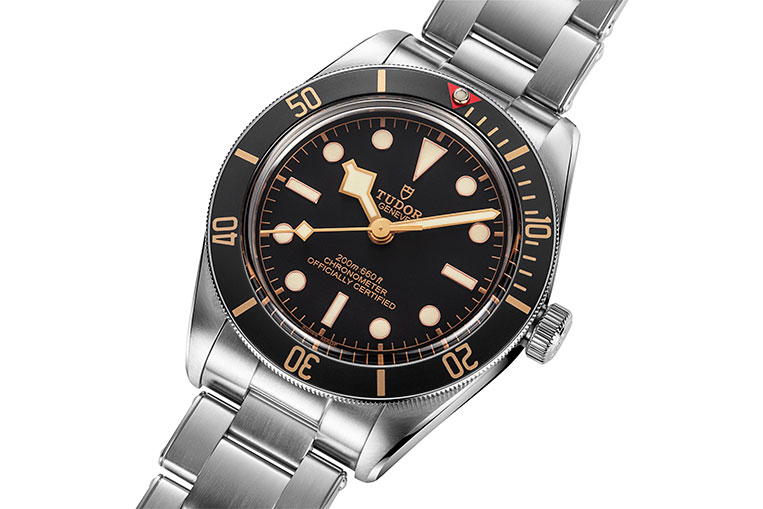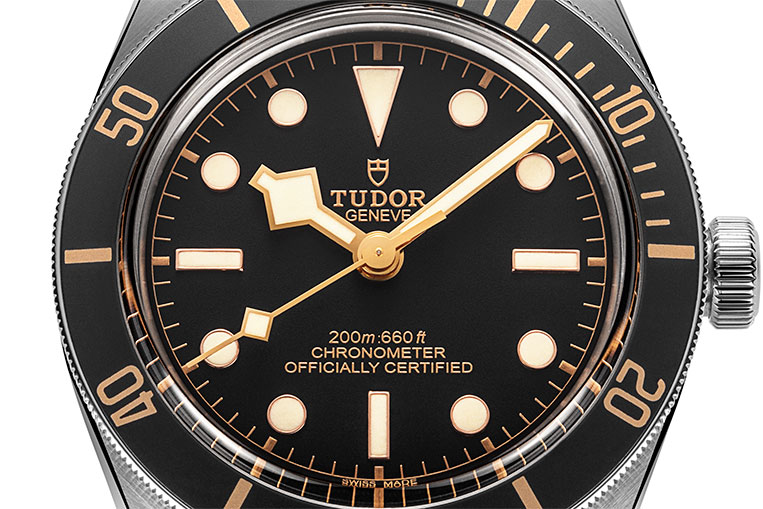Feature: Is The Tudor Black Bay 58 The Perfect Watch?
If you’ve bought one watch, you’re likely to end up buying another. The more that’s learned, the more can be appreciated, the more fine-tuned taste becomes. The refinement of those preferences can be boiled down into five common categories that are shared across many connoisseurs of fine watches—and it just so happens that the Black Bay 58 by Tudor fits into all of them.
39mm Case Size
Wrists come in all shapes and sizes, and so too do watches, but the aggregate perception of the watch-buying community is that there is diameter a case size should be that is absolutely, optimally perfect.
With the average wrist clocking in at around eighteen-and-a-half centimetres, and the average shape of said wrist being something of a flattened cylinder, plus over a century of wristwatch conventions evolving into what we have today, and what you end up with is a reportedly perfect watch size of 39mm, give or take a millimetre.
For reference, some of the greatest watches ever made were 39mm. The 1957 Omega Speedmaster, for example, and the 1972 Royal Oak. A millimetre either way and you’re talking the 1969 Zenith El Primero and, of course, the Rolex Submariner.
This size supposedly balances visual impact with wrist comfort and practicality in an optimal way, and with the original Black Bay being criticised for being a fraction too big, the 58 has been scaled down to exactly 39mm. Combined with equally miniaturised proportions, including a sub-12mm thickness and narrower strap, and the 58 quite pointedly honours the first hallmark of the perfect watch.
In-House Movement
To look at the Rolex Submariner, it may not seem that much has changed in the watch industry over the past century—but it really, really, has. As well as a shift from technology to luxury, there’s also been the revolution of the pocket watch into the wrist watch, and the move into modern materials like silicon, complex alloys and ceramics.
One change you may not be quite so familiar with is the development of the in-house movement. We think of the in-house movement now as the crowning achievement of a watch company, but that hasn’t always been the case.

Even in the 1970s, a watch manufacturer making its own components was relatively uncommon. Heuer sourced its Monaco case from a supplier catalogue; Rolex imported its calibres from Swiss movement maker Aegler; even Patek Philippe routinely used movements from the likes of Jaeger-LeCoultre and Lemania.
But technology has changed, and the availability of computer-aided design and CNC machining takes a lot of the grunt work away from the development and production of a watch movement. Not to say it’s easy, or cheap, most certainly not—but it is more accessible and less time-consuming, leaving the skilled artisanal roles for the decoration and assembly.
This is such a recent development for brands like Tudor that it’s within recent memory that a bought-in movement became an in-house one. The calibre MT5402, built exclusively to fit inside the 58, can trace its origins back to the first Tudor in-house movement in 2015—and even to the Breitling calibre B20 that now shares it.
Built On Heritage
Tudor as we know it today may have only been around since 2010, when the Heritage Chronograph reinvented the ailing brand from its aimless confusion to the fresh, desirable alternative it is today, but the story goes back way further than that—all the way to 1926. In a few more years, the Tudor watch brand will be one hundred years old.
And not only that, but it wasn’t Tudor founder Hans Wilsdorf’s first rodeo. Perhaps that name is familiar, and it should be, because he was the man who decided to import Aegler Swiss movements into London, case them up and sell them under the name Rolex.
Tudor was Wilsdorf’s way of tapping into a new market, a way of selling his Rolex watches with a cheaper movement inside for less money. But his standards were so high that Tudor watches were still good enough for use by the armed forces, specifically the French Navy, the US Navy, the Canadian Navy, the South African Navy, the Jamaican Navy, the Argentinian Navy and even the Israeli Navy.

What was supposed to be a money-spinner at the lower end of the market ended up being a whole thing in and of its own, earning its own legacy and its own history that continues to inspire its watches to this day. Watches and heritage go hand in hand, and the 58 has a fistful of it.
Good Value For Money
Everything seems to be ridiculously expensive these days. Houses, cars, clothes—it’s all on the up, and it doesn’t seem like we’re going to be catching a break any time soon. That makes the Tudor Black Bay 58’s £2,560 retail price something of a jaw-dropping realisation.
Let’s break that down: for £2,560 you get a stainless-steel dive watch, water-resistant to 200m, with a sapphire crystal, a bracelet with an excellent clasp, fitted with an in-house calibre with 70-hour power reserve from its bi-directional rotor, a free-sprung, adjustable mass balance wheel with silicon balance spring, all made by a subsidiary brand of the mighty Rolex … for £2,560. If you get a strap instead it’s only £2,340!
To put that into perspective, Rolex’s non-date Submariner, the 58’s closest brethren, is £5,750. That’s two-and-a-quarter times more! Is it two-and-a-quarter times more watch? Even Omega’s new Seamaster Professional costs £3,520, and that’s on a rubber strap. Can you think of anything that gives you as much for the price as the Black Bay 58?
Iconic Looks
Alright, so the elephant in the room here is that the Black Bay 58 looks like a Rolex Submariner. And it would, because the original 1958 Tudor this is inspired by was based on a Rolex Submariner. While that may provoke a rather lengthy and nerdy explanation, one that a work colleague casually saying, ‘Nice Rolex,’ may have unwittingly reeled themselves into, it does have its benefits.
Say, by way of example, that you wanted to purchase a watch that looked like this Black Bay 58 but said ‘Rolex’ on the dial. There’s nothing in Rolex’s current catalogue that would fit the bill; the watch you’d end up looking at would probably set you back some £50,000 and would be a half-century old.

That’s because, unlike serious Mr. Rolex, Tudor has chosen to be a bit more—to quote every haute couture designer ever—playful with its designs. Rolex has moved forwards, looking to the future; Tudor has taken a glance back, and it liked what it saw.
So, you get a riveted bracelet, which, although purely aesthetic, absolutely looks the part. There are no crown guards, less practical than with, but their absence allows the big crown to sit so comfortably on the side of the case. A ceramic bezel would be way more resistant to scratching, but an aluminium one has a rich warmth. At the risk of sounding like a crotchety old man, it ain’t like what it used to be in the old days, and the 58 knows it.
So, there you have it—irrefutable proof that the Tudor Black Bay 58 is the perfect watch. Well, it certainly ticks a lot of very impressive boxes, and it would be no easy task to find a watch that can outdo it. Funny thing is though, it can tick all those boxes and be absolutely spot on for you—or it could do absolutely nothing. But that’s a factor of the human brain, and that’s a different story entirely.
Looking for a Tudor watch? Click here to shop now




